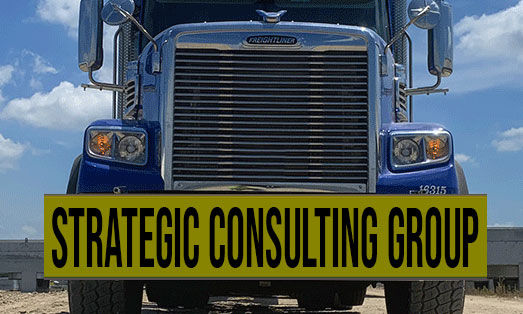Risk Mitigation: Identifying and addressing potential risks., Project Recovery, Gateway District Redevelopment, etc.
Risk Mitigation: Identifying and addressing potential risks., Project Recovery, etc…
Navigating the Unexpected: Risk Mitigation Strategies for Success
[City, State] – [Date] – In today’s dynamic world, success often hinges on the ability to navigate the unexpected. While minor delays might be easily managed, a major equipment failure could derail even the most well-planned project. This is where risk mitigation comes into play, providing a strategic framework to identify potential problems and develop effective solutions.
Risk mitigation is not just about avoiding problems, it’s about being prepared. It involves recognizing potential challenges, assessing their impact, and implementing proactive measures to minimize their negative effects. Think of it as having a safety net in place, providing a clear plan to deal with unforeseen circumstances.
Here’s a real-world example:
Project Recovery: Imagine a construction project facing delays and cost overruns. A well-crafted risk mitigation plan would include contingencies like alternative suppliers, backup equipment, and flexible scheduling, allowing the project to stay on track even in the face of unexpected challenges.
[Company Name/Spokesperson], [Title], highlights the importance of risk mitigation: “[Quote about the importance of risk mitigation and how it helps businesses achieve success]”.
[Company Name] offers a range of risk mitigation services, including:
* [List of services or solutions]
By proactively addressing potential risks, businesses can:
- Reduce the likelihood of costly disruptions.
- Improve operational efficiency and productivity.
- Enhance stakeholder confidence and build a stronger reputation.
- Maximize return on investment and achieve strategic goals.
[Call to Action] To learn more about how [Company Name] can help your organization navigate the unexpected, visit [website address] or contact us at [phone number/email address].
About [Company Name]:
[Brief description of the company and its expertise in risk mitigation.]
Navigating the Unexpected: Risk Mitigation Strategies for Success
TL;DR: Risk mitigation is about spotting problems before they happen and making plans to deal with them. It’s like having a safety net for your projects and goals. This article explains how to identify risks, analyze their impact, and create strategies to lessen their effects.
What is Risk Mitigation?
Imagine you’re building a sandcastle on the beach. You know the waves might come and wash it away, so you build it higher up on the sand. That’s risk mitigation! You identified a potential problem (the waves) and took steps to lessen its impact (building higher).
In the world of projects, businesses, and even everyday life, risk mitigation is about recognizing potential problems or challenges and taking action to reduce their negative effects. It’s like having a safety net in place, giving you a plan to deal with things that could go wrong.
Why is Risk Mitigation Important?
Think of risk mitigation as a superpower! It helps you:
- Avoid surprises: Instead of being caught off guard by problems, you have a plan to handle them.
- Save time and money: By anticipating issues, you can often avoid costly delays and rework.
- Increase your chances of success: By minimizing risk, you create a more stable path towards your goals.
Steps to Mastering Risk Mitigation
1. Identify the Risks:
This is like looking for hidden landmines. What could go wrong in your project, business, or situation? Think about:
- Possible problems: Could there be delays in supplies, changes in regulations, or unexpected costs?
- External factors: What about weather, competition, or changes in the economy?
- Internal factors: Could there be communication issues, team member turnover, or skill gaps?
2. Analyze the Impact:
Once you’ve identified risks, you need to figure out how serious they could be. Ask yourself:
- How likely is this risk to happen?
- What would be the consequences if it did happen?
Think of it like this: A small risk (like a minor delay) might be easy to handle, but a big risk (like a major equipment failure) could cause serious damage.
3. Develop Mitigation Strategies:
Now it’s time to create a plan! For each risk, consider:
- Avoidance: Can you completely prevent the risk from happening?
- Transferring: Can you pass the risk onto someone else (like insurance)?
- Mitigating: Can you reduce the likelihood or impact of the risk?
- Accepting: Is it okay to accept the risk?
4. Implement and Monitor:
Once you have your plan, put it into action! But don’t just forget about it. Regularly check to see if your strategies are working and adjust them as needed.
Examples of Risk Mitigation in Action
Here are a few real-world examples:
- Project Recovery: Imagine a construction project facing delays and cost overruns. Risk mitigation might involve bringing in additional resources, adjusting the schedule, or renegotiating contracts.
- Gateway District Redevelopment: A city planning a new downtown area could face risks like environmental concerns, funding issues, or community resistance. Risk mitigation strategies might involve environmental impact assessments, public engagement programs, and contingency plans for funding challenges.
Summary
Risk mitigation is a proactive approach to dealing with potential problems. By identifying, analyzing, and addressing risks, you can increase your chances of achieving your goals and avoid costly surprises. It’s like having a roadmap that helps you navigate the unexpected twists and turns on your journey.
More on Risk Mitigation: Identifying and addressing potential risks.…
- ## SEO Keywords: Risk Mitigation and Project Recovery
- General:
- Risk mitigation
- Risk management
- Risk assessment
- Risk identification
- Risk analysis
- Risk control
- Project recovery
- Crisis management
- Business continuity
- Disaster recovery
- Specific:
- **Risk mitigation strategies
- **Risk mitigation plan
- **Risk mitigation techniques
- **Risk mitigation tools
- **Project risk mitigation
- **Risk mitigation in software development
- **Risk mitigation in construction
- **Risk mitigation in finance
- **Risk mitigation in healthcare
- **Project recovery plan
- **Project recovery strategies
- **Project recovery methods
- **Project rescue
- **Project salvage
- **Project turnaround
- **Project revival
- Benefits:
- **Reduce project risk
- **Improve project success rate
- **Minimize project delays
- **Control project costs
- **Avoid project failure
- **Enhance project resilience
- **Improve business continuity
- **Increase stakeholder confidence
- Tools & Resources:
- **Risk mitigation software
- **Risk assessment tools
- **Project recovery tools
- **Risk management frameworks
- **Risk mitigation training
- **Project recovery training
- **Risk mitigation consultants
- **Project recovery consultants
- Industry-Specific:
- **Cybersecurity risk mitigation
- **Financial risk mitigation
- **Operational risk mitigation
- **Construction risk mitigation
- **Healthcare risk mitigation
- **IT project recovery
- **Software development project recovery
- Long-Tail Keywords:
- **How to mitigate risks in project management
- **Best practices for risk mitigation in software development
- **Steps to create a project recovery plan
- **Examples of successful project recovery strategies
- **What to do when a project is in jeopardy
- **Tips for avoiding common project risks
- **The importance of risk mitigation in business
- **How to identify and assess potential risks
- **Risk mitigation techniques for different industries
- **The impact of risk mitigation on project success
- **How to develop a robust risk management framework
- Questions:
- **What are the key elements of risk mitigation?
- **How can I improve my project risk management skills?
- **What are the best tools for risk assessment and mitigation?
- **What are the common causes of project failure?
- **How can I recover from a project setback?
- **What are the steps involved in developing a project recovery plan?
- This list provides a good starting point for your SEO efforts. Remember to use relevant keywords in your website content, meta descriptions, and page titles. Conduct keyword research to identify the most popular and effective terms for your specific audience.


